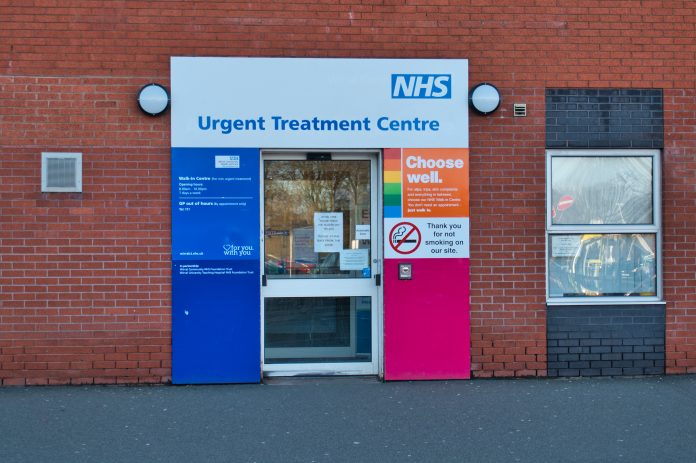Peter Ford, Public Sector Industry Principal, Pegasystems discusses how Artificial Intelligence (AI) has the power to inform and improve decision making in the NHS
Adam Kay’s book ‘This is Going to Hurt: Secret Diaries of a Junior Doctor’ shined a light on real pressures on the NHS, including lack of resources, workforce shortages and legacy technology. With a yawning chasm between connected and coordinated physical health services and non-physical welfare systems, the extent of the challenges faced in today’s healthcare is hardly surprising. However, AI is making it possible to relieve some of these pressures and plays a big role in connecting and consolidating data from physical and social healthcare to improve efficiency and provide superior health service across the UK.
Prevention rather than cure
Air pollution
Gone are the days where the government can just take a scattergun approach to all sections of a community with the same health messages. AI can be used to target UK communities most in need of care by making better use of data and shift the focus from cure to prevention. For example, in air pollution hotspots – such as parts of central and west London including Oxford Street and Hammersmith Broadway – AI could be used to better understand the impact of harmful pollutants on children, such as increased risk of asthma attacks in asthma patients.
It could also be used to track real-time air pollution levels and send text alerts in the most affected areas to vulnerable people to increase awareness on the effects and advise on how they can protect themselves and when, potentially, to see a doctor. The technology could also be used to make predictions on how this will impact demands on the NHS. For example, in areas that have experienced high levels of harmful NO2 for several weeks, AI could trigger the ordering of inhalers for local pharmacies to ensure they don’t run out.
Appointments
NHS GP appointment wait times could also be reduced and ineffective use of scarce healthcare resources minimised by putting a systematic approach in place for triaging and diagnosis. This could be used by receptionists, NHS ambulance call centre staff and GPs using technology to inform decisions for the next best action to take. For example, those taking 999 calls must make life or death decisions at peak times having to interpret caller symptoms quickly and making value judgements on where to send ambulances. Experienced professionals already get a second sense between what’s urgent and what’s not. But AI could be used to analyse the conditions the patient is suffering from and evaluate the severity of those symptoms so the patient can be automatically prioritised in a list of other callers. This could always be overridden by human intervention, but it could help point out emergencies that could be missed otherwise or give the decision-maker additional information to make choices on whether the call is an emergency or not.
Hospital beds
Technology can also be used to improve decision making in the NHS hospitals. According to the British Medical Association NHS Pressures – Winter 2018-19 report, excluding 21st to 29th December, NHS bed occupancy did not drop below 92% all winter. Furthermore, in England for the quarter ending 31st March 2019 there were 21,956 NHS operations cancelled at the last minute for non-clinical reasons such as ward beds being unavailable.
One of the reasons why this is an issue is that there are long lead times associated with putting in additional infrastructure – i.e. having buildings in place for more beds. On one hand it’s important to not have empty beds because that would burn public money, but flexibility for additional capacity is crucial should you have instances of an endemic flu or such.
It is suggested that some more lateral thinking is required to address these bottlenecks. For example, there are lots of private beds available as private hospitals operate with a large surplus. By sharing data sets between the private and public sector, AI could automatically work out the most efficient means of bed supply, automatically scheduling beds and taking care of the administration so that you’re matching supply and demand in a flexible fashion. AI could ensure the NHS is providing cheaper standard (non post-operative) beds for NHS patients that don’t need post-operative care so that those that do need special beds have them when they are needed e.g. the right type of beds for the medical condition in question.
Case management
Artificial intelligence for case management can also improve efficiency and service quality/outcomes. For any patient and condition, there could be a standard predetermined route through the system (overseen by health professionals who would apply their expertise of course) that would ensure healthcare is meeting adequate standards. This could take inputs from physical and welfare sub-systems to provide a total, and personally focused, healthcare plan. As an example, AI and natural language processing can be integrated into hospital doctors’ emails to work out what the next step of treatment is for each individual patient and create prompts if no action is taken.
It is worth noting, of course, that AI must also support the end to end process coupled with process automation rather than just at points in the journey. By doing this, better outcomes will be delivered within limited funding envelopes.
In addition, AI must be deployed carefully. This means ensuring the AI is transparent so all of the decisioning it makes leading to recommendations is clear showing the decision logic that led to the conclusion. The underlying models and algorithms to support recommendations and decisions should be able to be adjusted to counter any bias.
Using scare resources, whether that be beds, GP appointments or treatments to the best effect is key, and AI is vital to achieving that. There is massive potential to improve the current situation with the appropriate use of AI. Deployed in the right way, there is nothing to say the future of the healthcare cannot be a bright one.











